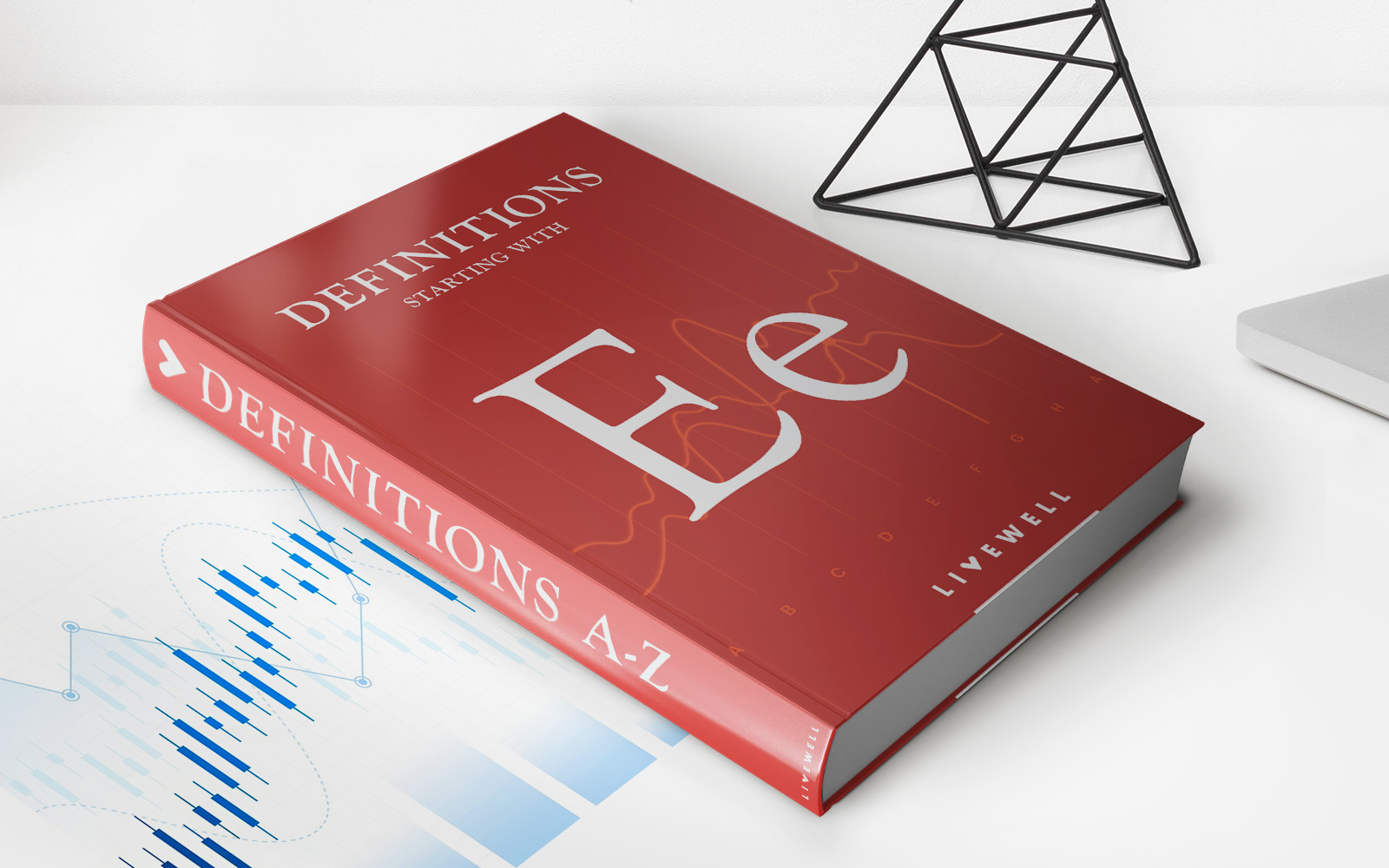

Finance
How Can I Avoid Paying Taxes On Savings Bonds
Modified: February 21, 2024
Learn how to avoid paying taxes on savings bonds and keep more money in your pocket. Explore finance strategies and expert tips to maximize your savings bonds' tax benefits.
(Many of the links in this article redirect to a specific reviewed product. Your purchase of these products through affiliate links helps to generate commission for LiveWell, at no extra cost. Learn more)
Table of Contents
- Introduction
- Understanding Savings Bonds
- Taxation of Savings Bonds
- Strategies to Avoid Paying Taxes on Savings Bonds
- Holding Savings Bonds in Tax-Advantaged Accounts
- Gifting Savings Bonds
- Converting Savings Bonds to Education Bonds
- Strategies for Low-Income Taxpayers to Minimize Taxes on Savings Bonds
- Conclusion
Introduction
Welcome to the world of savings bonds! Investing in savings bonds can be a smart financial move, providing a safe and reliable way to grow your savings over time. However, like any investment, savings bonds are subject to taxation. The thought of paying taxes on your hard-earned money may not be appealing, but fear not! There are strategies you can implement to minimize or even avoid paying taxes on your savings bonds.
Before we delve into these strategies, let’s first have a brief understanding of what savings bonds are and how they work. Savings bonds are debt securities issued by the U.S. Department of the Treasury. They are considered one of the safest investments available, backed by the full faith and credit of the United States government. Savings bonds come in two types: Series EE bonds and Series I bonds.
When you purchase a savings bond, you are essentially lending money to the government. In return, the government pays you interest over the bond’s term. Savings bonds have a fixed interest rate, which can be either a fixed rate for the life of the bond (Series EE) or a fixed rate combined with inflation adjustments (Series I).
Now, let’s address the elephant in the room: taxes. The interest earned on savings bonds is subject to federal income tax. However, you have the opportunity to reduce or eliminate this tax burden through various strategies. In the following sections, we will explore these strategies in detail, ranging from holding savings bonds in tax-advantaged accounts to taking advantage of educational bond provisions and more. Whether you are a high-income taxpayer or a low-income individual, there are options available to help you minimize or even avoid paying taxes on your savings bonds.
So, if you’re ready to learn how to keep more of your hard-earned money in your pocket, let’s dive into the world of tax-saving strategies for savings bonds!
Understanding Savings Bonds
Before we explore strategies to avoid paying taxes on savings bonds, it’s essential to have a clear understanding of what savings bonds are and how they work.
Savings bonds are a type of government security issued by the U.S. Department of the Treasury. These bonds are designed to provide a safe and reliable way for individuals to invest and save money over time. There are two main types of savings bonds: Series EE bonds and Series I bonds.
Series EE bonds are the most common type of savings bonds. These bonds have a fixed interest rate determined at the time of purchase. The interest is added to the bond’s value and can be redeemed after a certain period of time, typically 20 years. Series EE bonds earn interest for up to 30 years, but the longer you hold the bond, the more it will grow in value.
On the other hand, Series I bonds are inflation-protected bonds. The interest rate consists of two components: a fixed rate determined at the time of purchase and an inflation rate based on changes in the Consumer Price Index. The interest earned on Series I bonds is added to the bond’s value and can be redeemed after one year. Like Series EE bonds, Series I bonds also continue to earn interest for up to 30 years.
Both types of savings bonds can be purchased either electronically through TreasuryDirect, an online platform maintained by the U.S. Treasury, or in paper form. However, as of January 1, 2012, paper savings bonds are no longer sold directly by financial institutions but can still be purchased online through TreasuryDirect.
One key benefit of savings bonds is their low-risk nature. They are backed by the full faith and credit of the U.S. government, making them a secure investment option. Unlike stocks or other investments tied to market performance, the value of savings bonds does not fluctuate with changes in the economy.
Another advantage of savings bonds is their liquidity. While there are restrictions on redeeming bonds within the first year of purchase, after that initial period, you can cash in your savings bonds at any time. This flexibility makes them a versatile savings tool for individuals who may need access to their funds in the future.
Now that we have a solid understanding of what savings bonds are and their different types, let’s move on to explore the taxation aspects related to these investments and how you can minimize or avoid paying taxes on your savings bonds.
Taxation of Savings Bonds
When it comes to savings bonds, it’s important to be aware of the tax implications associated with them. The interest earned on savings bonds is subject to federal income tax, although they are exempt from state and local taxes.
The tax on savings bonds can be handled in two ways: either pay taxes on the interest earned annually or defer taxes until redemption or maturity. The default method is to pay taxes annually on the interest accrued each year. However, you have the option to defer paying taxes until you redeem the bonds or until they reach their final maturity, which is typically after 30 years. Deferred taxes mean that the interest grows tax-deferred, allowing for potential compounding over time.
It’s worth noting that if you choose to defer taxes, you will need to report the accrued interest on your annual tax return and pay taxes on it when you redeem the bonds or they reach maturity. This can result in a significant tax liability in the year of redemption.
Another point to consider is that savings bonds have specific withholding rules. If you cash in your bonds before they mature, the financial institution or organization responsible for the redemption will withhold federal income tax from the amount you receive. The amount withheld depends on your taxable income and other factors. However, if you use the proceeds from redeeming the bonds for educational expenses, you may be eligible to exclude the interest from your taxable income.
Additionally, savings bonds offer certain tax advantages when used for educational purposes. If you meet specific requirements, the interest earned on savings bonds can be tax-free when used to pay for qualified higher education expenses. This provision applies to both Series EE and Series I bonds.
To sum it up, savings bonds are subject to federal income tax on the accrued interest. You can either choose to pay taxes annually or defer them until redemption or maturity. It’s important to carefully consider your tax strategy when it comes to savings bonds to minimize any potential tax liabilities and take full advantage of any available tax benefits.
Now that we have a clear understanding of the taxation of savings bonds, let’s explore some strategies you can implement to avoid or minimize paying taxes on your savings bonds.
Strategies to Avoid Paying Taxes on Savings Bonds
If you’re looking for ways to minimize or even avoid paying taxes on your savings bonds, there are several strategies you can implement. Let’s explore some of these strategies below:
- Hold Savings Bonds until Maturity: One of the simplest strategies is to hold your savings bonds until they reach their final maturity, typically 30 years. By doing so, you can defer paying taxes on the interest earned until redemption, potentially reducing your overall tax liability.
- Use Savings Bonds for Education: Another effective strategy is to use your savings bonds for qualified educational expenses. If you meet certain income and ownership requirements, the interest earned on savings bonds can be tax-free when used to pay for qualified higher education expenses. This can include tuition, fees, and certain other educational expenses.
- Redeem Savings Bonds in a Low-Income Year: If you anticipate a year with a lower income, such as during retirement, consider redeeming your savings bonds at that time. By doing so, you may be able to minimize the impact of taxes on the interest earned, as your overall tax bracket may be lower.
- Gift Savings Bonds: You can also consider gifting your savings bonds to family members or loved ones. By transferring the ownership of the bonds, you may be able to shift the tax liability to the new owner, potentially reducing your tax burden.
- Exchange Savings Bonds for Other Investments: If you no longer wish to hold savings bonds and are looking to diversify your investments, consider exchanging your savings bonds for other investment options. By doing so, you can potentially defer paying taxes on the interest earned while still maintaining the potential for growth in your portfolio.
It’s important to note that while these strategies can help minimize or avoid taxes on savings bonds, you should consult with a tax professional to ensure that you comply with all relevant tax laws and regulations. They can provide personalized advice based on your specific financial situation and goals.
By implementing these strategies, you can make the most of your savings bonds and potentially reduce the impact of taxes on your overall investment returns. Remember to evaluate each strategy in light of your unique circumstances and consult with a professional to maximize the tax benefits.
Now that you’re equipped with various strategies to avoid paying taxes on your savings bonds, let’s explore some specific ways to leverage tax-advantaged accounts to hold your savings bonds.
Holding Savings Bonds in Tax-Advantaged Accounts
If you’re looking to maximize the tax benefits of your savings bonds, holding them in tax-advantaged accounts can be a smart move. There are two main types of tax-advantaged accounts that can be used to hold savings bonds: Individual Retirement Accounts (IRAs) and Education Savings Accounts (ESAs).
1. Individual Retirement Accounts (IRAs):
IRAs offer a variety of tax advantages, depending on the type of IRA you choose. Traditional IRAs allow for tax-deferred growth, meaning that you won’t pay taxes on the interest earned until you withdraw the funds during retirement. By holding savings bonds within a traditional IRA, you can enjoy the benefits of tax-deferred growth, potentially reducing your tax liability over time. However, keep in mind that once you withdraw the funds, the distribution will be subject to ordinary income tax rates.
Roth IRAs, on the other hand, offer tax-free growth. Contributions to a Roth IRA are made with after-tax dollars, meaning that you’ve already paid taxes on the money. However, the advantage lies in the fact that qualified withdrawals, including earnings, are tax-free. By holding savings bonds within a Roth IRA, you can potentially avoid paying taxes on the interest earned entirely, as long as you meet the necessary requirements.
2. Education Savings Accounts (ESAs):
ESAs, also known as Coverdell Education Savings Accounts, are specifically designed to help individuals save for education expenses. Contributions to an ESA are made with after-tax dollars, similar to a Roth IRA. However, the earnings within the account grow tax-free, and qualified withdrawals for educational expenses are also tax-free.
By holding savings bonds within an ESA, you can potentially enjoy tax-free growth on the interest earned. This can be especially advantageous if you plan to use the savings bonds for educational purposes in the future.
It’s important to note that both IRAs and ESAs have contribution limits and eligibility requirements. Consult with a financial advisor or tax professional to determine the best tax-advantaged account for your savings bonds, taking into consideration your financial goals and circumstances.
By holding savings bonds in tax-advantaged accounts, you can maximize the potential tax benefits of these investments. Whether it’s through tax-deferred growth or tax-free withdrawals, incorporating tax-advantaged accounts into your savings bond strategy can help reduce your tax liability and increase your overall investment returns.
Now that we’ve explored holding savings bonds in tax-advantaged accounts, let’s move on to another strategy that involves gifting savings bonds to reduce your tax burden.
Gifting Savings Bonds
Gifting savings bonds can be a valuable strategy to not only share the benefits of savings bonds with loved ones but also potentially reduce your own tax burden. By transferring ownership of the bonds to another individual, you can shift the tax liability to the new owner, potentially minimizing the impact of taxes on your financial situation.
Here’s how gifting savings bonds works:
- Transferring Ownership: As the current owner of the savings bonds, you have the option to transfer ownership to another person. This can be a family member, a loved one, or anyone you wish to gift the bonds to.
- Gifting Limits: It’s important to be aware of the annual gift tax exclusion amount set by the IRS. As of 2021, you can gift up to $15,000 per recipient without triggering any gift taxes. If you are married, you and your spouse can each gift up to $15,000 per recipient, effectively doubling the amount to $30,000. Keep in mind that if your gift exceeds this annual limit, it may require you to file a gift tax return, although you may not actually owe any gift taxes unless you’ve exhausted your lifetime gift tax exemption.
- Tax Liability: Once you transfer ownership of the savings bonds to the recipient, they become responsible for reporting and paying taxes on the interest earned when the bonds are redeemed or reach maturity. This can be advantageous if the recipient falls into a lower tax bracket or has other tax deductions that can offset the tax liability.
- Estate Planning Benefits: Gifting savings bonds can also offer estate planning advantages. By reducing the assets in your estate, you can potentially decrease estate taxes and simplify the inheritance process for your heirs.
- Consideration for Education: If the recipient plans to use the savings bonds for qualified education expenses, they may be eligible for tax-free treatment of the interest earned. This can provide additional tax benefits and help minimize the financial burden of educational costs.
Before gifting savings bonds, it’s important to consult with a financial advisor or tax professional who can guide you through the process and address any potential tax implications. They can help ensure that the transfer is executed correctly and provide the necessary documentation for the recipient to report the interest income in their tax return.
Gifting savings bonds is not only a generous gesture but also a strategic move to potentially reduce your tax liability while allowing your loved ones to benefit from the investment. Consider the gifting option and explore the potential tax advantages to make the most of your savings bonds.
Now that we’ve explored gifting savings bonds, let’s move on to another strategy that involves converting savings bonds to education bonds.
Converting Savings Bonds to Education Bonds
If you or someone in your family is pursuing higher education, converting savings bonds to education bonds can be a smart strategy to take advantage of the tax benefits specifically designed for educational expenses. This conversion allows you to potentially minimize or even eliminate the tax liability associated with the interest earned on your savings bonds.
Here’s how converting savings bonds to education bonds works:
- Eligibility: To qualify for the tax benefits of education bonds, you must meet certain requirements set by the IRS. The bonds must be issued in your name as the owner, and you must be at least 24 years old when you purchase the bonds. Additionally, you must use the bond proceeds to pay for qualified higher education expenses.
- Qualified Expenses: The expenses that qualify for tax-free treatment when using the savings bond proceeds include tuition, fees, books, supplies, and equipment required for enrollment or attendance at an eligible educational institution. Room and board expenses are generally not considered qualified expenses.
- Tax Exclusion: If you meet the eligibility criteria and use the savings bond proceeds for qualified education expenses, you may be able to exclude the interest earned on the bonds from your taxable income. This means that the interest income will not be subject to federal income tax, potentially resulting in significant tax savings.
- Limits and Phases-Out: It’s important to note that there are income limits and other restrictions associated with the tax exclusion for education bonds. The tax benefits start to phase out at certain income levels and are completely phased out at higher income thresholds. Consult with a tax professional to determine if you qualify for the tax exclusion and to understand any limitations that may apply.
- Record-Keeping: It’s essential to maintain proper documentation to support your claim for the tax exclusion. This includes keeping records of the bond purchases, expenses paid with the bond proceeds, and additional documentation required by the IRS.
By converting savings bonds to education bonds and using the proceeds for qualified education expenses, you can potentially enjoy tax-free treatment of the interest earned. This can be a significant advantage when it comes to minimizing your tax liability and managing the financial burden of higher education.
However, it’s important to note that if you use the savings bond proceeds for non-qualified expenses or if you don’t meet the eligibility criteria, the interest income will be subject to federal income tax. It’s crucial to carefully review the IRS guidelines and consult with a tax professional to ensure compliance and maximize the tax benefits.
Now that we’ve explored the conversion of savings bonds to education bonds, let’s move on to discussing specific strategies for low-income taxpayers to minimize taxes on savings bonds.
Strategies for Low-Income Taxpayers to Minimize Taxes on Savings Bonds
For low-income taxpayers, minimizing taxes on savings bonds can be a valuable strategy to optimize their financial situation. Here are some effective strategies that low-income individuals can implement:
- Coordinate Redemption with Low-Income Years: If you anticipate a year or period of lower income, consider redeeming your savings bonds during that time. By doing so, you can potentially minimize the impact of taxes on the interest earned, as your tax bracket may be lower. This strategy allows you to realize the gains from your savings bonds while paying less in taxes.
- Coordinate Bond Redemption with Retirement: If you’re nearing retirement or already retired and have savings bonds, consider planning your bond redemption during retirement. Retirement often comes with a lower taxable income, and redeeming your savings bonds during this period can help reduce your overall tax liability. Additionally, retired individuals may be eligible for certain tax benefits or deductions that can further reduce the tax burden on the interest earned.
- Explore Tax Credits and Deductions: Low-income taxpayers may qualify for various tax credits and deductions, such as the Earned Income Tax Credit (EITC) or the Child Tax Credit. These credits and deductions can help offset your tax liability and potentially reduce the impact of taxes on the interest earned from your savings bonds. Be sure to explore all available tax breaks and consult with a tax professional to optimize your tax situation.
- Consider Reinvesting in Tax-Advantaged Accounts: If you have low-income and are eligible, consider reinvesting the proceeds from redeemed savings bonds into tax-advantaged accounts such as Individual Retirement Accounts (IRAs) or Health Savings Accounts (HSAs). By doing so, you can defer or potentially eliminate taxes on the interest earned on your savings bonds and enjoy the tax advantages offered by these accounts.
- Seek Professional Tax Advice: It’s essential for low-income taxpayers to seek the guidance of a tax professional who can help navigate the complexity of the tax code and identify the best strategies to minimize taxes on savings bonds. They can provide personalized advice based on your specific financial situation and ensure that you take advantage of all available tax benefits and deductions.
By implementing these strategies, low-income taxpayers can minimize the tax burden on their savings bonds and maximize their overall financial situation. It’s important to remember that tax laws and regulations can change, so staying informed and consulting with a tax professional regularly is crucial.
Now that we’ve explored strategies for low-income taxpayers, let’s wrap up our discussion.
Conclusion
Navigating the world of savings bonds and taxes can be complex, but with the right strategies, you can minimize or even avoid paying taxes on your savings bonds. By implementing the following strategies, you can take advantage of the tax benefits and maximize the returns on your investments:
- Holding savings bonds until maturity to defer taxes on the interest earned.
- Using savings bonds for qualified education expenses to enjoy tax-free treatment of the interest.
- Redeeming savings bonds during low-income years or in retirement to reduce the tax liability.
- Gifting savings bonds to transfer the tax burden to the recipient.
- Holding savings bonds in tax-advantaged accounts like IRAs and ESAs for additional tax benefits.
- Converting savings bonds to education bonds to take advantage of tax-free treatment for education expenses.
- Implementing strategies specifically designed for low-income taxpayers to minimize taxes.
Throughout your savings bond journey, it’s important to consult with a tax professional or financial advisor who can provide personalized advice based on your unique circumstances. They can guide you through the intricacies of the tax code and help you optimize your tax strategy.
Remember to keep proper documentation, stay informed about any changes in tax laws, and review your financial goals periodically to ensure that your savings bond strategy aligns with your objectives.
By utilizing these strategies, you can make the most of your savings bonds, protect your hard-earned money, and potentially increase your overall investment returns. Whether you aim to minimize taxes, support education expenses, or gift bonds to loved ones, these strategies can be valuable tools in your financial arsenal.
Now, armed with this knowledge, you can confidently navigate the world of savings bonds and make informed decisions to optimize your financial future.














